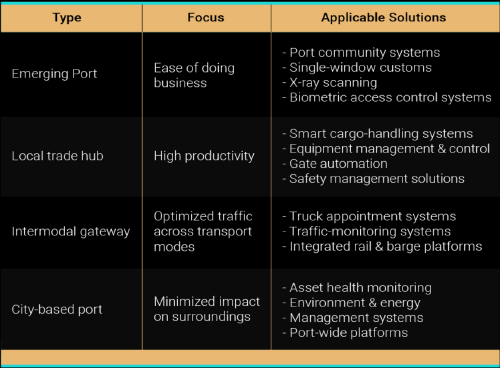Smart Ports


-
Hassle free, paperless, digitally connected movement of goods: Use computer vision to identify container ID, destination etc
-
Secure and logged access to physical and digital resources: Use block chain to log movement, data access, custom declaration, Digitally controlled gates with biometric access, Smart warning systems for fires, congestion
-
Optimize resource utilization: Use sensors, drones, cameras to streamline traffic, reduce (un)load times, Collect data on weather and forecast bottlenecks, high load times
-
Standardization of data that can be shared, interfaced: Participation of stakeholders: terminal operators, customs, SEZ/port authorities, logistics, industry, shippers, railways/transport